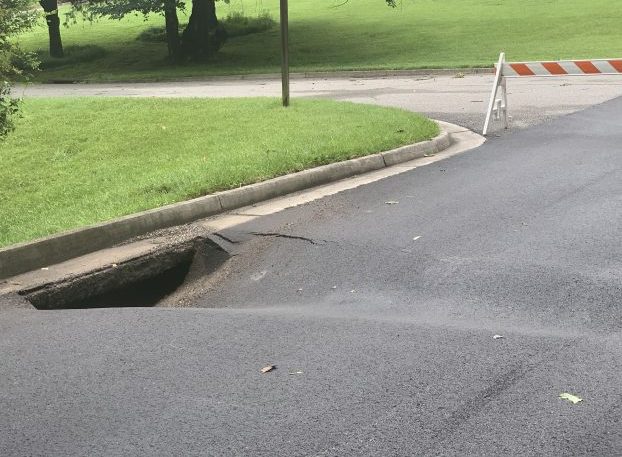What happens next? School districts detail plans as Assembly stalls
Published 1:30 am Friday, February 17, 2023
|
Getting your Trinity Audio player ready...
|
CUMBERLAND – Virginia school districts, including those in our region, are in a ‘wait and see’ mode. On the plus side, both the Virginia House and Senate versions of the state budget would fully cover the shortfall that came about due to a bookkeeping mistake. The bad part is that districts have to hold off on budget discussions until that’s finalized, a decision that could take a couple more weeks or as much as a few months.
“We’re waiting to see how the General Assembly addresses this shortfall,” Cumberland County Superintendent Dr. Chip Jones said. “Budget talks are occurring but you do not have a final allocation until the governor signs the final budget. So, right now it is a waiting game.”
And while yes, the money is included in both the House and Senate versions of the budget, it’s in different amounts. The House version, for example, would give $90 million for this current year, to cover the $58.1 million shortfall. Next year, however, it would only allocate $77 million for the remaining $111 million budget hole. The Senate version, however, fully covers the $201 million total budget shortfall over the two year period. And plus, there’s an extra $441 million Gov. Glenn Youngkin wants to add in for schools, but both the House and Senate have to debate how that would be spent.
How did we get here?
Trending
First off, here’s a quick refresher on the situation. On Jan. 1, Virginia eliminated its grocery tax. There was just one problem. That tax had provided millions of dollars in funding for school districts across the state, including Buckingham, Cumberland and Prince Edward. Specifically, $201 million had been set aside in the current two-year state budget, money that would go from the grocery tax to help fund schools. Districts budgeted with their share of that money in mind, expecting it to come because nobody told them otherwise.
Instead, superintendents received a letter from the Virginia Department of Education at the end of January. It explained there had been an error and now, more than three fourths of the way through the current school year, districts won’t receive all the state funding that had been promised, for this year or the next. That’s what the Assembly is now trying to fix, but it’s taking a while to do it.
No vote yet in the Assembly
Since the House and Senate budget amendments are significantly different, the two groups have to come to a compromise before any of those get voted on. How different? There’s $1 billion separating the Senate version from the House. And part of that involves the schools.
The House version, for example, would give $90 million to schools for this current year, to cover the $58.1 million shortfall. Next year, however, it would only allocate $77 million for the remaining $143 million budget hole. The Senate version, however, fully covers the $201 million school budget shortfall over the two year period. And plus, there’s an extra $441 million Gov. Glenn Youngkin wants to add in for schools, but both the House and Senate can’t agree on where that money would come from or how that would be spent.
What happens if the House and Senate can’t agree? The Assembly takes a recess for a couple months, the current budget stays in place until an agreement is in place and no action happens to fix the school shortfalls. And to be clear, there is a ticking clock, as the General Assembly is supposed to adjourn on Saturday, Feb. 25.
“I’m always hopeful we’ll settle it on time, but I’m prepared to sit here until July 1,” Sen. Janet Howell said in a statement on Tuesday.
Trending
House Majority Leader Terry Kilgore seemed to agree.
“Well, we’ve got a two-year budget in place,” he said Tuesday, talking with reporters after the day’s session. “We’d all like to see it amended. But if the Senate won’t join us, well, that’s where we are.”
School districts wait for help from VDOE
Now as the Assembly debates, the Virginia Department of Education (VDOE) has promised to send some help. It’s worth pointing out they’re partly to blame, as it was a VDOE budgeting error that caused all this.
Each year, they give districts a budget tool, a mathematical formula that helps the district’s staff determine how much each district would receive from the state over the next two years. The department didn’t account for the loss of the $201 million, so their tool gave incorrect numbers. Now VDOE officials are promising districts will get two new, corrected formulas to work with in the next week, one for the House budget and one for the Senate. And yes, that means double the work for district officials.
“We are waiting to see what the General Assembly decides as far as funding for next year’s budget,” said Buckingham County Superintendent Dr. John Keeler. “There are some differences between the two houses. We are expecting the VDOE to provide calc tools for both the House and Senate budgets next week. We will compare the two and build our first budget draft.”
The same goes for Prince Edward County, where the staff doesn’t plan to start budget workshops until Feb. 22.
“By then, I’m hoping a tool is here and we are clear on what needs to happen,” Prince Edward Superintendent Dr. Barbara Johnson told her school board last week.






